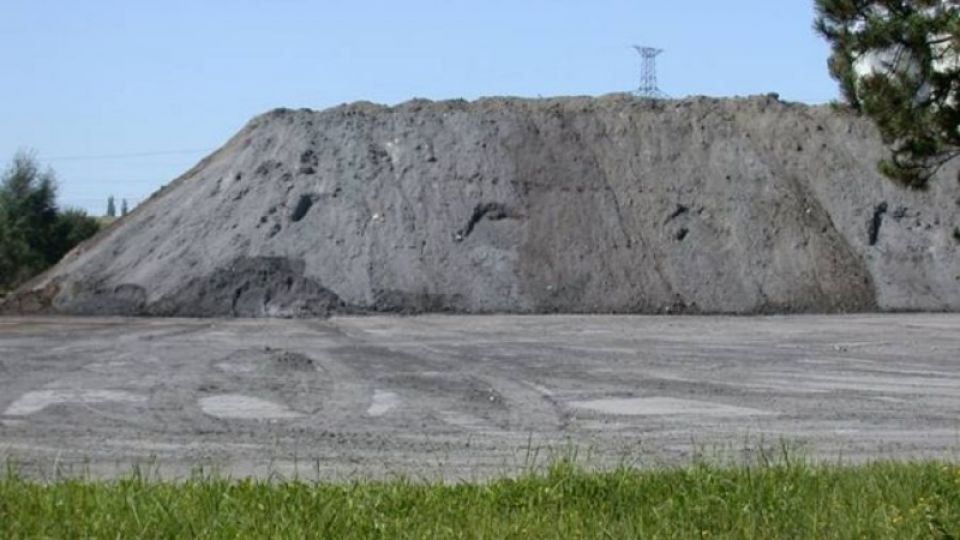Results of the analysis of samples of sediment and soil show that the surroundings of Hůrky near Temelín are polluted by persistent organic pollutants (1) - especially dioxins (2) and polychlorinated biphenyls (3). Dioxin concentration exceeds the limits defined by the Ministry of Environment as "pollution, which can have a negative impact on human health and the environment, and which requires further action." The source of this pollution is the manipulation with ash from waste incineration and possibly with other hazardous waste, which is done by Quail s.r.o.
There is evidence of environmental pollution of Hůrky near Temelín as a result of the activities of Quail s.r.o. "Water flowing downstream to the rainwater that runs from the area of the facility is significantly higher polluted than in neighborhood. Moreover, the concentration of hazardous substances decreases with distance from the area where the waste and ashes are handled. If we look at the specific composition of dioxins in the sample, we can recognize dioxins, which are typical for ashes from incinerators," said Alena Nekvapilová, an independent expert who carried out a technical evaluation of samples taken during several years around Hůrky.
"Instead of using non-combustion technologies for the irreversible destruction of persistent organic pollutants (POPs), ashes are mixed with other materials and diluted to the desired concentration. This practice is not consistent with the principles of the Stockholm Convention (4). Using this technology, there is significant contamination by POPs of the surroundings of the facility and at places where a final dusting mix is used," said Dr. Jindřich Petrlík from Arnika Association.
One such place is the lagoons from the uranium ore processing MAPE Mydlovary. Hazardous chemical substances contained in ash from incinerators do not threaten only the surroundings of Temelín, but also Mydlovary village that are already burdened by pollution. "Although the South Bohemia region is defended from the construction of waste incinerators thanks to public opposition and NGOs, South Bohemians face the effects of industrial activity at two places," said the coordinator of Arnika Association’s activities in South Bohemia Jitka Straková.
"The spread of pollution from the facility in Hůrka into nature is also the result of too benevolent limits for dioxins and other POPs in waste, defined by Czech and European legislation," concluded Petrlík.
Arnika Association will suggest that the Czech Environmental Inspectorate and the South Bohemian Regional Authority review the integrated permission issued for the facility of Quail and will demand tightening of conditions set out therein.
Legend:
1) Persistent organic pollutants (POPs) are responsible for immune system damage and some of them cause cancer. In already very small doses they cause hormonal disorders and threaten reproduction of humans and animals. Due to their chemical stability they persist for a long time in the environment and because of this they "travel" thousands of kilometers from the source. They do not dissolve in water, but they do dissolve in fats to which they bind - they are therefore bioaccumulative.
2) Dioxins (PCDD / F) have no benefit and have never been produced intentionally. As an unwanted product from burning of fossil fuels and waste they are released into the environment also during industrial production where chlorine is involved (chemical, textile, paper industry), metallurgy contributes too. They bind well to the fatty tissue, bioaccumulation occurs primarily in animals. Prolonged exposure to dioxins leads to the damage of the immune and nervous systems, as well as changes of endocrine system (especially the thyroid gland) and reproductive functions. The formation of dioxins can be prevented. Chlorine can be replaced in most processes where dioxins are inadvertently formed because of it. Waste is better to sort and recycle, organic waste can be composted.
3) Polychlorinated biphenyls (PCBs) are synthetic organic compounds produced and massively used between the 30th to 70th years of the last century. PCBs entered the environment during their manufacture and use, today high-risk is especially to handle improperly with hazardous waste and old ecological burdens. PCBs are also unintended by-product of many industrial production, they result from burning of waste or at steel mills. PCBs cause liver diseases, circulatory disorders, fatigue, prolong pregnancy, reproductive problems and they are carcinogenic.
4) The international Stockholm Convention came into the world in 2001 on the ground of the UNEP (United Nations Environment Programme). Through ratification, the signatory states commit to eliminate the most important persistent organic pollutants (POPs). It is ratified by both the Czech Republic and the European Union. Arnika Association helps to fulfill the obligations of the Convention by regulating the facilities which handle with waste and other industrial activities in the Czech Republic and internationally.







